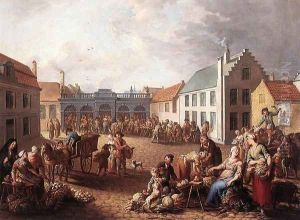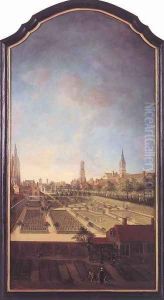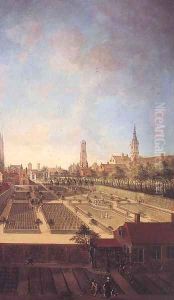Jan Antoon Garemijn Paintings
Jan Antoon Garemijn was a Flemish painter born on February 11, 1712, in Bruges, which was then part of the Spanish Netherlands. He is known for his work during the Rococo period, which was characterized by ornate and highly decorative art and architecture. Garemijn's works include a wide range of subjects such as religious themes, portraits, and genre scenes.
Garemijn received his early artistic training from his father, Pieter Garemijn, who was also a painter. He later studied under Matthias de Visch, another well-regarded artist of the time. Garemijn's talent was recognized early on, and he became a master in the Bruges Guild of Saint Luke by the age of 21, which was a notable achievement for a young artist.
Throughout his career, Garemijn was active in Bruges and became an influential figure in the city's art scene. His style was influenced by the works of Flemish Baroque artists as well as the French Rococo style. Garemijn's paintings are known for their lively brushwork, vibrant color palette, and attention to detail, which made them popular among the patrons of his time.
In addition to painting, Garemijn also worked as an art teacher and was involved in the restoration of older artworks. He played a significant role in the cultural life of Bruges, contributing to the preservation of its artistic heritage.
Jan Antoon Garemijn continued to work and teach until his death on January 4, 1799, in Bruges. His legacy is preserved in his paintings, which can still be seen in various museums and collections, as well as in the influence he had on the artists who followed him. Garemijn's contributions to the Rococo movement in the Flemish region make him an important figure in the history of European art.


